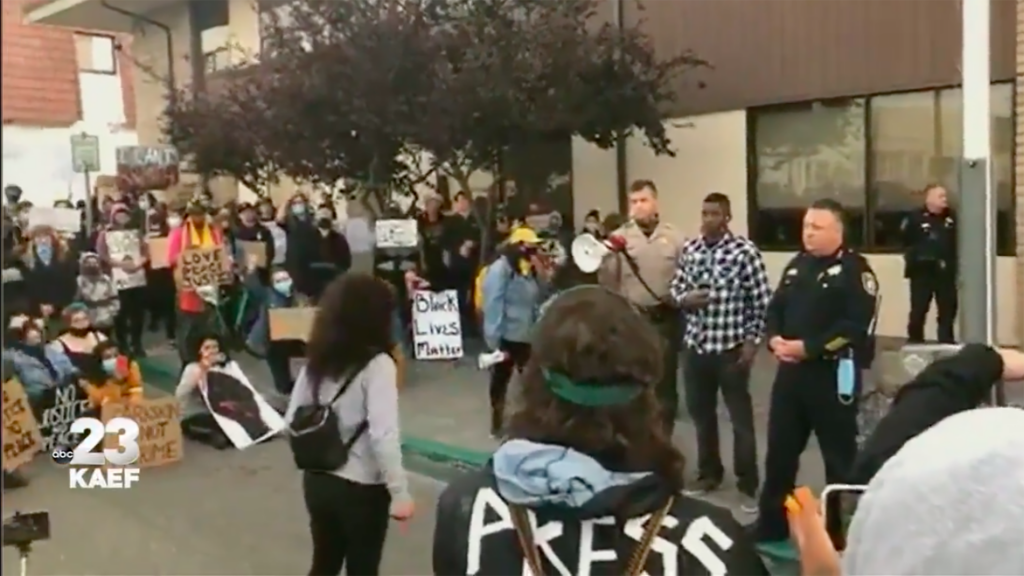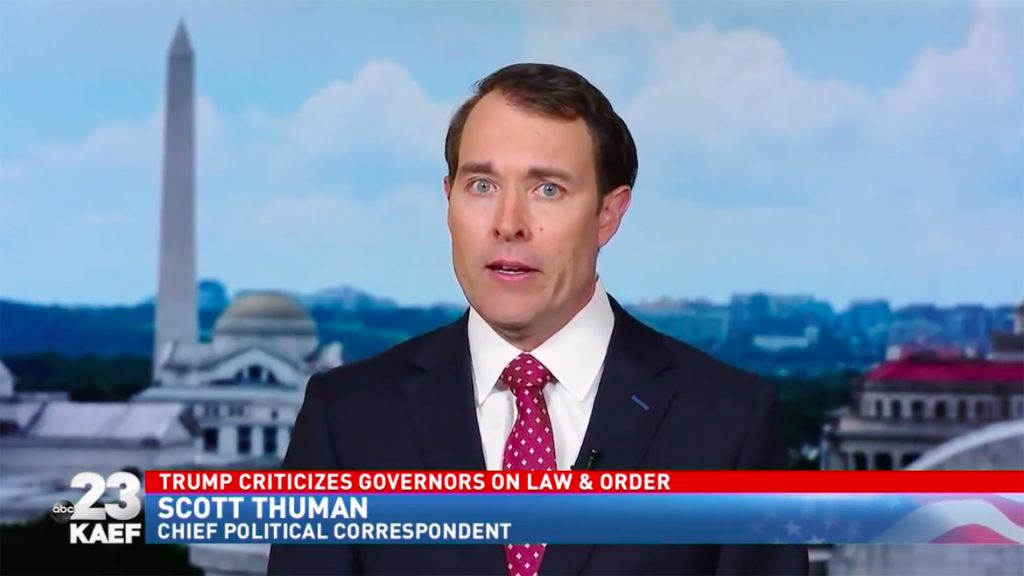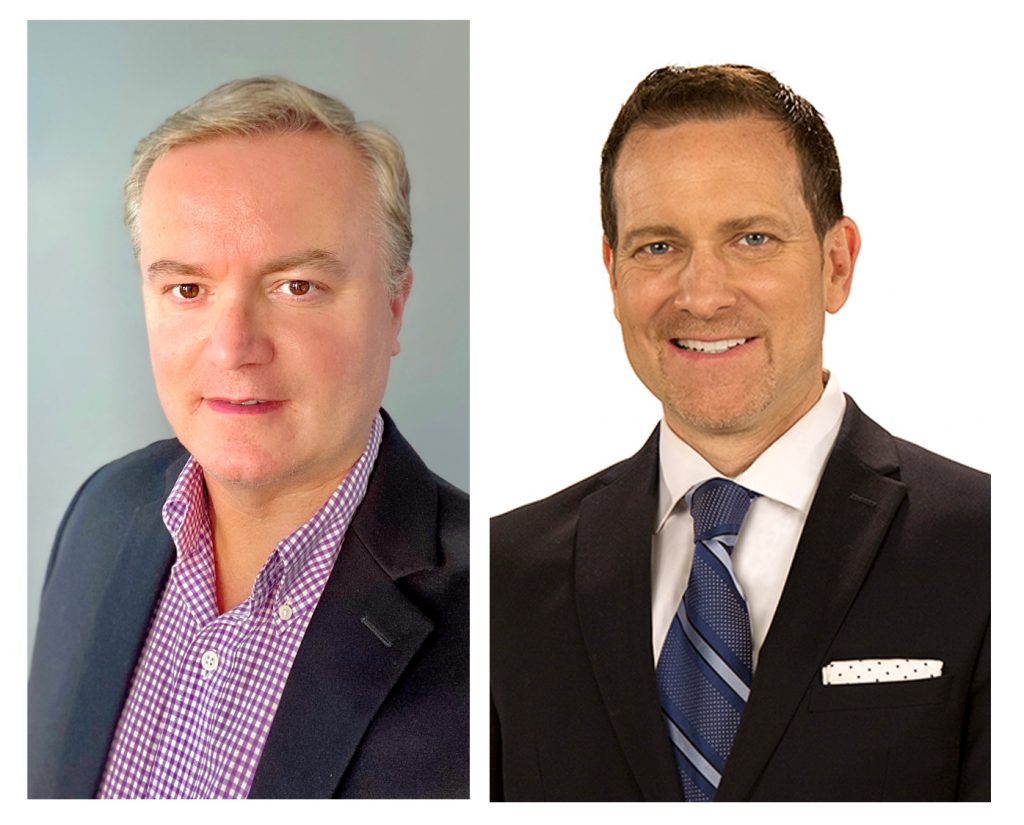
When Nazy Javid, news director at KAEF-TV in Eureka CA, wants to take her 6 p.m. anchor and her 6 p.m. producer out to lunch, she only needs a table for one. Herself. In market #197 and with a total newsroom staff of only seven people, everyone has to do more than one job. “My GM likes to call us ‘The Little Engine That Could,’ because somehow we make magic happen every day,” Javid says.
But clever multi-tasking is not enough. “We’re just not equipped by any metric to be able to produce the capacity, the level of news that we do with the staffing that we have,” Javid says, And when Sinclair bought the station just over three years ago, Javid had her Eureka moment: She discovered Sinclair’s sophisticated system for sharing stories among its stations.

Every station group shares content in some fashion, but Sinclair has made it a priority and built an elaborate system to get the job done. “Over the years, as Sinclair expanded, we saw an even greater opportunity to make sure that whether it’s a great piece of content from Portland, Maine or Portland, Oregon, a viewer in San Antonio or Austin may also be interested in it,” says Jeff Parsons, Sinclair’s West Coast Group News Director and Director of Special Projects — one of the architects of the sharing system and the collaborative culture on which it depends.
Sinclair’s high-functioning content engine has nothing to do with the company’s controversial history of “must-run” commentaries. The idea is to give newsrooms more distinctive stories while freeing up local resources for local reporting — all strictly at the station’s option. “This doesn’t negate the extreme importance of local content. This is considered a supplement to that,” says Parsons. “There’s great content being generated by 4,500-plus journalists around the country, and we want to make sure that every station in our group has access to that.”
Every morning, about 2,700 of those 4,500-plus Sinclair journalists — news managers, assignment editors, producers, anyone with an editorial role — get an email with dozens of stories available to them that day. Topping the list: original stories from the Washington bureau, which has four full-time reporters who are encouraged to explore unique angles that don’t just replicate what CNN Newsource or the network affiliate news services offer.

But DC-based Executive Producer of National Content Eric Zager also sorts through as many as 200 stories a day to create an all-you-can-eat smorgasbord of stories for stations eager to beef up their newscasts. His daily note offers brief story summaries and slugs; information on projected feed times for packages and teases; links to scripts; and sometimes even suggestions on how to integrate a package into a station’s coverage, such as topping it with news service content or buttoning with a local sidebar or an anchor-driven explainer built on graphics sent from the Washington hub.
So for the latest findings about Covid-19, for example, producers all over the country can draw on medical reporting from Liz Bonis, Health Anchor and Medical Reporter at Cincinnati’s WKRC-TV, rather than using precious local resources to duplicate her efforts. “I want to get those local stations as much of a bank of content that they can choose from [as possible],” says Parsons, “to make the best content they can locally.”
When big stories break, Sinclair newsrooms can count on coverage from their own sister stations — and even have the option to sign up for live shots from the scene. “Let’s say there’s a breaking story in Austin, Texas, and it’s a huge story,” says Parsons. “We will crank out what we call a grid and offer it up to all of our stations to have a custom live site from that breaking news location.”
Of course all this sharing puts a burden on each station to contribute content as well as consume it. “So we have a little bit of a push and pull system,” says Parsons. “Part of the responsibility of the local station is to be on the lookout for your fellow sister stations, because your sister stations are getting asked to be on the lookout for you.”
Watch a KOMO package on the CHOP protest as seen on KBOI/Boise
KOMO-TV in Seattle has done a lot more pushing than pulling lately, as an epicenter of both the Covid-19 pandemic and anti-racism protests following the killing of George Floyd. News director Bill Dallman is an evangelist for Sinclair’s sharing culture, or as he describes it, “a champion of contributing to the group, because it’s for the greater good. What I try to do as a leader is turn it on its head: ‘This isn’t more work for us. This is more visibility for us.’”
When protesters took over Seattle’s “Capitol Hill Occupied Protest” (CHOP) zone a month ago, Dallman’s reporters began contributing two “look-lives” every day for different dayparts and time zones. “In maybe six or 12 months, another market will have a huge story and Bill will get that reward back,” says Parsons. “I think it begins with leadership. It really does start with people who see the opportunity, embrace it and help their staff understand that opportunity.”

Parsons estimates that Sinclair’s journalists have access to about 70% of the group’s overall output now, and the team is tweaking the technology to approach 100%, including graphics packages and explainers. “My goal would be to make every single bit of content available,” he says. “Right now, we do share a lot of package content. But there’s a lot of other content in that newscast that might be relevant. If a producer in Cedar Rapids does a breakout on Covid that a producer in Las Vegas would also be interested in, why should they both have to write it? They can tweak it, they can change it, they can make it their own, but why rewrite something if it’s the same breakout?”
That kind of sharing may sound like a step towards the homogenization that critics of consolidated station ownership warn about, but the Sinclair system actually illustrates the benefits of scale and collaboration when newsrooms are struggling to produce hours of newscasts with limited resources and to stand out from their competitors. “We have a choice whether or not we want to use it,” Nazy Javid says, “and I lean on the side of using it a lot, just because we have such a small staff that I really like to put our energy with the one reporter that we have in the field into producing good local, impactful accountability journalism.”
Parsons says research shows that viewers are tired of repetition and redundancy and eager for more news about their region and the country as a whole. “We really encourage [our newsrooms] to realize that the viewers are exhausted by the sea of sameness in this industry,” he says. “What we’re doing is providing them with as much content as we can. And if they don’t choose to embrace that system, they’re going to repeat the cat stuck in the tree 12 more times.”
News directors Bill Dallman and Nazy Javid both say that sharing stories and systematic collaboration have given their stations a competitive edge. “When Sinclair took over, it actually turned out to be an incredible resource for us,” Javid says. “It’s not necessarily about efficiency,” says Dallman. ”It’s about more content, more ideas, more ways that your products stand out. No one’s telling us, ‘You must run these things’. We’re running them because they’re better. I marvel every day at some of the stuff that other newsrooms are doing in our group.”